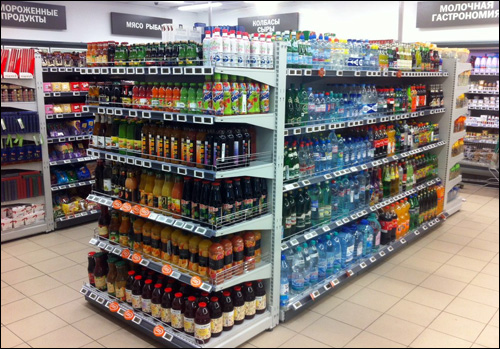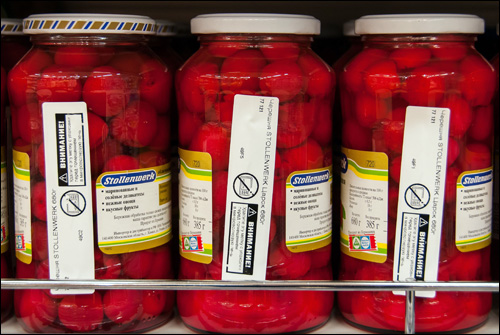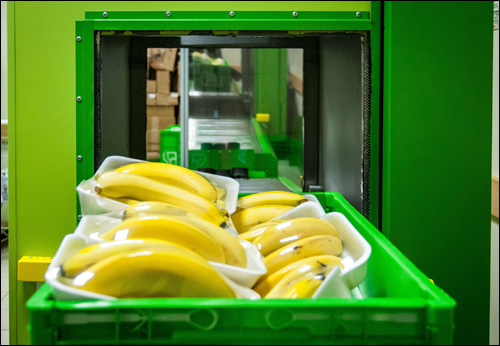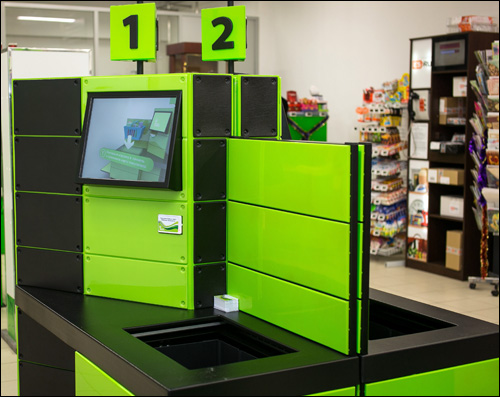Future Store LLC, a Russian joint venture that is developing item-level radio frequency identification technology for supermarkets, is currently in the process of selecting a Russian retailer and a specific store location at which to launch the first commercial pilot of its solution. The venture is owned by X5 Retail Group, the country’s largest food retailer, Rusnano, a Russian agency dedicated to nanotechnology development, and Sitronics, a Russian technology firm.

The Future Store is nearing the end of its RFID pilot program at a test store being operated at X5’s headquarters in Moscow. The joint venture hopes to see its RFID solution adopted by a commercial supermarket open to the general public by later this summer. The store is expected to be located in Moscow, but which specific retailer will operate it has yet to be determined.
X5 operates 3,472 stores, including the Pyaterochka discount grocery chain and the Perekrestok supermarket chain. Approximately two years ago X5, Rusnano and Sitronics formed Future Store LLC, with the aim of creating a complete RFID solution that could be deployed within food stores. The result, now being tested at X5’s headquarters, is intended to increase efficiency at the point of sale (POS), improve inventory management, better control product expiration and speed up goods receiving. “Our main target is increasing the speed of trading processes,” says Olga Karaeva, Future Store’s director general.
Initially, Future Store employed consulting services from the Institute for Systems Analysis, the Russian Academy of Sciences and IT services company Capgemini. The company developed 15 unique use cases for the RFID technology, several of which were selected, including tracking inventory on shelves, self-checkout by customers and electronic article surveillance.
“The fact is that there are no ready-made RFID solutions in the whole world for the tasks put forward,” Karaeva says. Although the group tested existing RFID-based solutions, she adds, “They [didn’t] satisfy our needs in the question of technical requirements [such as 100 percent reads of all goods in the store].”

“Therefore,” Karaeva says, “they have been created independently” by the members of Future Store and its subcontractors.
The group tested different passive EPC Gen 2 RFID tags to determine which models could be read on a variety of products, including those stored in cans and filled with liquids. During that effort, the group tested more than 200 tag types from 50 different suppliers. Once the best tag for the project was identified—Alien Technology‘s ALN-9654 G Higgs3 tag, at a cost of 13 cents apiece—the group next studied optimal tag placement for each item. In addition, the team evaluated the benefits of having a store’s staff use a mobile RFID reader to conduct inventory counts by reading tags attached to goods on shelves, but decided to develop a smart shelf system instead, which would read tags without requiring employee intervention.
The technology was initially displayed as part of a prototype solution at Moscow’s Rusnanotech exhibition—a four-day event that includes about 4,000 visitors—in 2011. At the exhibition, a 250-square-meter (2,690-square-foot) shop was set up to demonstrate a working model of the Future Store solution, with approximately 25,000 tagged goods, an RFID-enabled smart POS scanner and terminal, and an anti-theft system.
Following that demonstration, the group set up the technology at a test store located within X5 Retail Group’s headquarters. At that store, X5’s staff members and visitors can use the RFID technology to purchase 4,500 different items, including dry goods, beverages, produce and meat. That pilot is slated to continue through April.

At the test store, Alien’s ALN-9654 G tags are printed and encoded using Zebra Technologies‘ RZ400 printer-encoder and RP4T mobile thermal transfer printer in the store’s “tagging center.” Tags are placed on all goods, including bottled soda and other beverages, frozen fish, containers of yogurt, jarred fruits and vegetables, fresh produce, magazines and toiletries. Each tag is linked to the item’s stock-keeping unit (SKU) and other data, such as its expiration date, which is then stored in the RFID IS software, which Sitronics developed for the project. As goods leave the tagging center for the 2,519-square-foot (234-square-meter) sales floor, they pass through an RFID tunnel reader, which updates the items’ status.
The goods are then placed on smart shelves, developed by RST-Invent LLC, that read each tag and transmit that ID number to the software, which again updates each item’s status. A total of 30 smart shelves are currently being used at the pilot store. The smart shelves read the tags in real time as they are placed on a particular shelf, and if an item is removed, an update can be sent to the software indicating that item is no longer on the shelf. When a customer places an item in a hand basket, the shelf reader ceases to interrogate its tag, and that event is updated in the software.
Once finished shopping, the customer places the basket on the counter of the smart POS terminal, and also places his or her ID card, acquired from the store, on the counter at that same terminal. A high-frequency (HF) RFID reader built into the terminal reads the ID encoded to the 13.56 MHz passive HF tag embedded in the card, while the ultrahigh-frequency (UHF) reader captures the ID numbers of the tags of all goods within the basket, and displays the results on the screen; this process, the company reports, takes mere seconds. The user responds to a prompt on the touchscreen, in order to confirm that the purchase data is correct, and the details are then linked to the unique ID number on the card, which the shopper takes to the payment terminal.
At this location, another reader captures the card’s ID, links it to the details regarding the items to be purchased (stored in the back-end software), and completes the payment process. All items purchased are then marked in the software as “sold.”

The readers deployed at the smart shelves, POS terminals and exit were all Impinj Speedway Revolution R420 EU models.
“We decided to divide the process of payment and scanning between two terminals,” Karaeva states. “It’s for optimization shopping area and equipment. Combining these machines would take up a lot of space. Plus, if something breaks, it would be easier and cheaper to repair a single terminal dedicated either to consolidating items to be purchased or completing the transaction, rather than blocking the whole shopping process. In our opinion, for shoppers, it is more important to avoid crowds.”
Another reader is located at the exit, mounted on the ceiling. Each tag’s unique ID number is read and received by the software, which screens out all items sold. The software sounds an alert only in the event that an item that has not been purchased is detected leaving the store.
Furthermore, the store’s operators use a Motorola Solutions MC9090-G handheld reader to search for specific goods, and to conduct regular inventory counts on the shelves.
To date, the group reports that it has not only proven RFID’s ability to provide the necessary functions, such as inventory management and POS reading, but also demonstrated the solution to members of the public through its initial display.
Future Stores LLC is presently marketing the technology to retailers. The complete RFID solution consists of tunnel readers, smart shelves, self-checkout terminals and an info-kiosk that lets customers view the products they have selected, along with details about those goods, such as pricing and expiration dates. The system will also include smart trolleys consisting of screens attached to shopping carts that display media about items for sale at the store, and also indicate their location.
“We are currently negotiating with multiple Russian retailers” about use of the RFID technology, Karaeva says.


